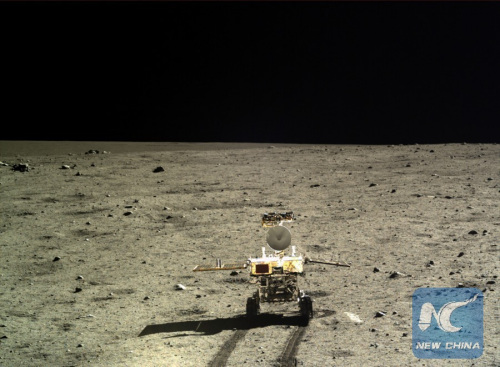
Photo taken by the landform camera on the Chang'e-3 moon lander on Dec. 22, 2013 shows the Yutu moon rover during Chang'e-3 lunar probe mission's first lunar day circle. (Xinhua file photo)
A new type of basaltic rock, discovered by Chinese moon rover Yutu (Jade Rabbit) during an unmanned lunar exploration mission, may help shed light on lunar volcanism.
The rock was sampled at a fresh crater called Zi Wei, a landing site of Chang'e-3, which reached the moon with the rover in December 2013.
Measurements of the rock composition indicate that the basalt contains a high enrichment of titanium dioxide and olivine. Researchers from China and the United States said the basalt is distinctive from samples collected by the Apollo and Luna missions, carried out by the United States and the former Soviet Union decades ago.
They reckon the area was covered in a late-stage magma ocean during the moon's development around three billion years ago. While rock samples found by the Apollo and Luna missions mainly date back from the early-stage magma oceans between three and four billion years ago.
The measurements were made by the rover-mounted Active Particle-induced X-ray Spectrometer (APXS) and the Visible and Near-infrared Imaging Spectrometer (VNIS).
A team of scientists from China and the United States, led by Ling Zongcheng from China's Shandong University, published the findings on the journal Nature Communications this week.
"The chemical and mineralogical information of the landing site provides new grounds for some of the youngest volcanism on the moon," said the journal.
Yutu was designed to roam the lunar surface for three months while surveying for natural resources and sending data back to earth. However, mechanical problems made it unable to move in January 2014, though authorities said later it was still able to send data back to earth.


















































